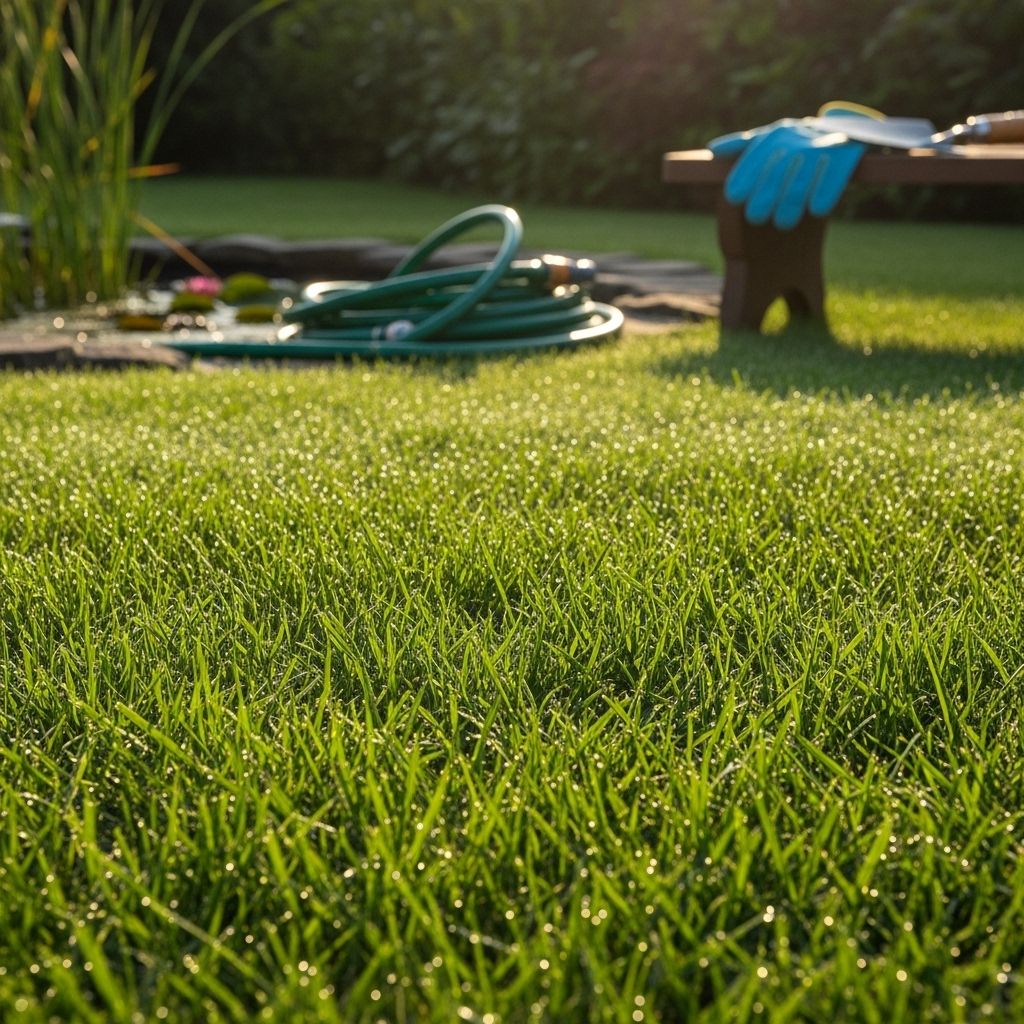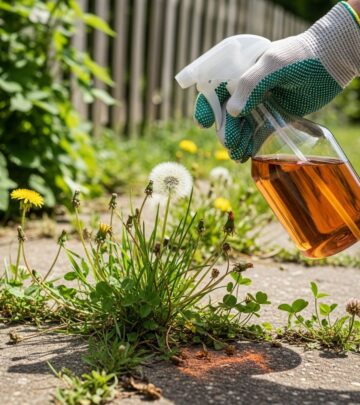How To Grow Fescue Grass: A Step-By-Step Guide For A Lush Lawn
Master the art of growing fescue grass, from planting to maintenance, for a thriving, resilient lawn year-round.

Image: HearthJunction Design Team
How to Grow Fescue Grass: Guide to a Lush, Resilient Lawn
If you’re dreaming of a resilient, rich green lawn that can thrive through both chilly winters and warm summers, fescue grass is a prime candidate. Known for its adaptability, drought resistance, and relatively low maintenance requirements, fescue has long been a favorite for home lawns in temperate regions. This comprehensive guide covers everything you need to know about fescue grass—from choosing the right type and preparing your soil, to planting, maintaining, and reviving your fescue lawn throughout the year.
What is Fescue Grass?
Fescue refers to a group of cool-season turfgrasses prized for their tolerance of shade, drought, and temperature swings. Commonly categorized into two main types—tall fescue and fine fescue—these grasses are frequently used for residential lawns, parks, and even athletic fields. Their beneficial characteristics include:
- Adaptability: Thrives in a wide range of soil types and climate conditions.
- Shade Tolerance: Fine fescues, in particular, perform well in low-light areas.
- Drought Resistance: Deep root systems make fescue efficient at accessing underground moisture.
- Low Maintenance: Requires less frequent mowing and fertilizing compared to many warm-season alternatives.
Types of Fescue Grass
- Tall Fescue: Coarse-bladed, robust, and very tolerant of foot traffic and heat. Ideal for lawns that receive heavy use.
- Fine Fescue: Includes creeping red, chewings, hard, and sheep fescue—characterized by finer textures and exceptional shade tolerance.
Preparing to Plant Fescue
Success with fescue starts before any seed hits the ground. Proper preparation ensures that your grass gets the best start possible and is resilient for seasons to come.
1. Test and Amend the Soil
- Soil Test: Use a soil test kit to check pH and nutrient levels. Fescue thrives in slightly acidic to neutral soils (pH 6.0–7.0).
- Add Amendments: Incorporate lime to raise pH or sulfur to lower it, along with compost or organic matter to improve soil structure and fertility.
2. Remove Weeds and Debris
- Clear the area of rocks, sticks, and existing weeds. Use a non-selective herbicide if necessary, allowing the area to recover before seeding.
3. Loosen and Level the Soil
- Till or use a garden rake to loosen the top 2-3 inches of soil, promoting strong root growth.
- Level the surface to prevent pooling and uneven growth.
When to Plant Fescue Grass
The timing of your planting is a crucial factor in fescue lawn success:
- Best Time: Early fall is ideal, as cooler temperatures and autumn rains promote rapid seed germination and root development without the stress of summer heat. Spring is a secondary option, but seedlings may struggle as temperatures rise.
- Soil Temperature: For optimal germination, ensure soil temperatures are between 60°F and 75°F.
How to Plant Fescue Grass: Step-by-Step
1. Choose the Right Seed
- Purchase fresh, high-quality fescue seed suited for your climate and sun/shade conditions.
- Consult local experts or reputable garden centers for blends if you have mixed sun and shade areas.
2. Seed the Lawn
- Use a broadcast or drop spreader for even distribution, following package rates.
- For patch repairs, gently rake seeds into bare spots and cover lightly with soil.
3. Press and Water
- Roll the seeded area with a lawn roller to ensure good seed-soil contact.
- Water gently but thoroughly, keeping the top inch of soil consistently moist until seedlings reach about 2 inches tall.
Growing Your Fescue Grass: Essential Maintenance Steps
Once germination occurs, your focus shifts to nurturing healthy, dense turf. The following care routine helps you achieve a resilient fescue lawn:
Mowing
- Wait several weeks after seeding before the first mow; let grass reach about 4 inches high.
- Only remove the top one-third of blade length at each mowing (never scalp).
- Raise mower blades during periods of heat or drought to minimize stress.
Weeding
- Thick, healthy fescue naturally suppresses many weeds, especially in cool seasons.
- During summer, watch for thinning, which can invite weeds. Hand-pull or spot-treat as needed.
- Maintain slightly higher mowing heights and apply slow-release fertilizer to help grass outcompete weeds.
Watering
- Fescue is drought-tolerant, but regular irrigation is important during summer heat.
- Water deeply and infrequently, soaking soil several inches down, then allow the lawn to dry slightly before watering again.
- Adjust frequency based on climate, rainfall, and soil drainage.
Aerating
- Core aerate once annually—ideally in fall or spring when fescue is actively growing.
- Aeration relieves soil compaction, improves root growth, and enhances air, water, and fertilizer absorption.
- After aerating, apply fertilizer to promote recovery and vigor.
Fescue Grass Troubleshooting and Revitalization
Even the most resilient lawns sometimes need intervention. Here’s how to address common problems and revitalize a tired fescue lawn:
- Brown Patches: Usually due to drought, disease, or compacted soil. Increase watering and aerate if needed.
- Thin or Patchy Growth: Overseed in early fall and fertilize to encourage dense regrowth.
- Weed Invasion: Address with a combination of hand-pulling, selective herbicides, and improved lawn care practices.
Step-by-Step Lawn Revitalization
- Aerate: Use a core aerator to open up the soil and relieve compaction.
- Add Compost: Spread a thin layer of compost and work it into the aerator holes with a rake.
- Fertilize: Apply a balanced, slow-release lawn fertilizer.
- Overseed: Distribute fresh fescue seed, rake in lightly, and keep moist until germination.
- Water: Give the area a thorough, gentle watering.
Fescue Grass Growth Timeline
Fescue seeds usually germinate in 14–21 days, with fine fescue typically sprouting slightly faster than tall fescue. Growth rate depends on:
- Soil temperature and moisture
- Oxygen levels
- Watering frequency
Patience is important; overseeding and proper mowing help create the dense, healthy lawn you seek.
Table: Fescue Types at a Glance
| Type | Texture | Shade Tolerance | Drought Tolerance | Ideal Use |
|---|---|---|---|---|
| Tall Fescue | Coarse | Moderate | High | All-purpose lawns, high foot traffic |
| Creeping Red Fescue | Fine | Excellent | Moderate | Shady lawns, ornamental gardens |
| Chewings Fescue | Fine | Excellent | Moderate | Hilly or sloped lawns, shade |
Seasonal Fescue Lawn Care Calendar
- Spring: Aerate, fertilize, overseed if necessary, and begin mowing as the grass greens up.
- Summer: Water deeply during dry spells, mow high, and monitor for pest or disease issues.
- Fall: Best time for overseeding, aeration, and fertilization; reduce mowing frequency as growth slows.
- Winter: Fescue generally remains green in mild climates and requires minimal intervention. Avoid excessive traffic on frozen lawns.
Frequently Asked Questions (FAQs)
How often should I mow my fescue lawn?
Mow as needed to maintain a height of 3–4 inches, never removing more than one-third of the blade length in a single cut. Avoid mowing during drought or extreme heat to prevent further stress on the grass.
Can I plant fescue in the spring?
Yes, but early fall is preferred. If spring is your only option, plant as soon as soil temperatures consistently reach 60–65°F. Seedlings may require extra attention as summer heat approaches.
How do I water a newly seeded fescue lawn?
Keep the soil consistently moist (not soggy) until the grass is established. Water lightly several times per day until seeds germinate, then gradually reduce frequency as roots develop.
What’s the best fertilizer for fescue?
Use a balanced, slow-release fertilizer designed for cool-season grasses. A soil test will help you determine any specific nutrient needs.
Is fescue grass good for shaded areas?
Yes, especially fine fescue varieties such as creeping red and chewings fescue, both of which are highly shade-tolerant.
Conclusion
Whether you’re starting a new lawn or revitalizing a tired patch, fescue grass offers remarkable resilience, adaptability, and ease of maintenance. By following the steps outlined here—testing and preparing your soil, planting at the right time, and maintaining with thoughtful mowing, watering, and aerating—you’ll enjoy a lush, vibrant lawn that stands up to the challenges of weather and wear. With patience and a bit of seasonal attention, your fescue turf will be the pride of your landscape for years to come.
References
Read full bio of Shinta










